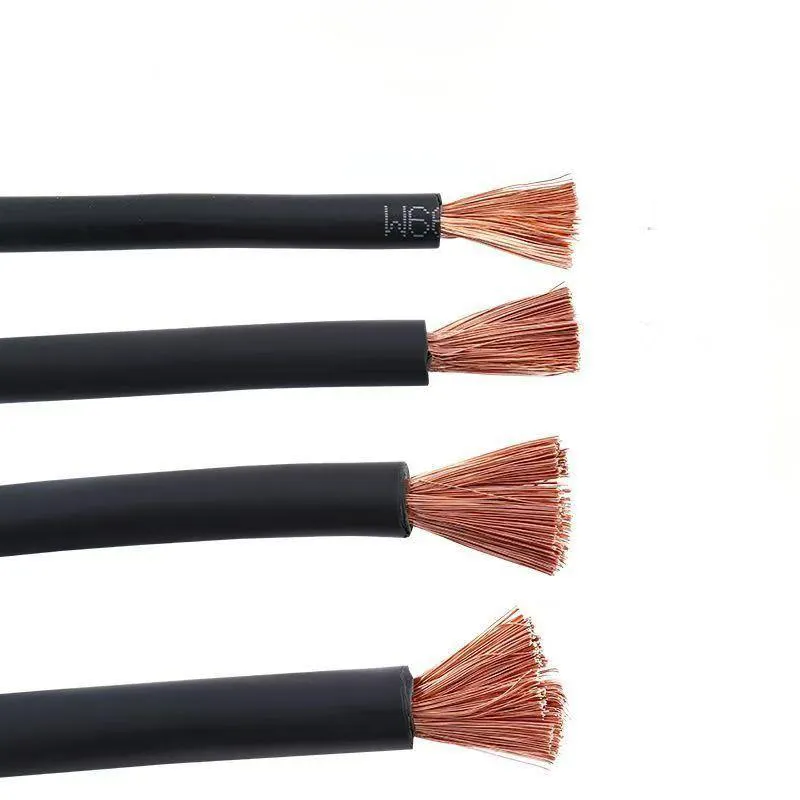Time: 2025-05-08 04:16:14 Source: Henan Province Jianyun Cable Co., Ltd.
Welding cables are highly flexible, durable cables designed to carry high electrical currents in welding applications, such as connecting a welding machine to the electrode holder or ground clamp. Typically made of fine-stranded copper for flexibility and conductivity, these cables are insulated with tough, heat-resistant materials like EPDM or neoprene to withstand harsh environments, including heat, abrasion, and chemicals. Unlike standard electrical cables, welding cables are built for portability and frequent movement, making proper sizing critical for safety and performance.

The American Wire Gauge (AWG) system is used to specify the size of welding cables, with lower AWG numbers indicating thicker wires capable of handling higher currents. For example, a 6 AWG welding cable has a diameter of approximately 0.162 inches (4.11 mm) and a cross-sectional area of 13.3 mm², suitable for moderate welding tasks. In contrast, a 4 AWG cable, with a larger diameter of 0.204 inches (5.19 mm), can handle higher amperage for heavier welding. The AWG size directly affects the cable’s ability to carry current without overheating, making it a key factor in welding cable selection.
Selecting the correct welding cable size depends on several factors to ensure efficient power delivery and prevent hazards like overheating or voltage drop:
For instance, a 6 AWG cable might suffice for a 200-amp welder with a short cable length, but a 4 AWG or larger cable may be needed for longer runs or higher amperage.
Welding cables are typically single-core, with one thick, stranded conductor designed to carry the high current required for welding. However, in some specialized welding setups, multi-core cables (e.g., 4-core cables) may be used:
In welding, single-core cables like 4 AWG or 6 AWG are preferred for their simplicity and flexibility, while 4-core cables are more common in industrial power distribution or control systems.
The following table provides general guidelines for selecting welding cable sizes based on amperage and cable length, assuming copper conductors and a 30°C ambient temperature. Always consult the welding machine’s manual or a professional for precise sizing.
| AWG Size | Amperage (Up to 50 ft) | Amperage (50-100 ft) | Typical Applications |
|---|---|---|---|
| 6 AWG | Up to 175 amps | Up to 150 amps | Light to medium welding (e.g., MIG, stick) |
| 4 AWG | Up to 225 amps | Up to 200 amps | Medium to heavy welding |
| 2 AWG | Up to 300 amps | Up to 250 amps | Heavy-duty welding, industrial |
| 1/0 AWG | Up to 400 amps | Up to 350 amps | High-amperage industrial welding |
Note: Ampacity decreases with longer lengths due to voltage drop. For lengths over 100 feet, consider upsizing the cable or consulting an electrician.
Proper cable sizing and handling are essential to prevent electrical hazards and ensure reliable welding performance:
Selecting the right welding cable size is crucial for safe and efficient welding operations. By understanding the role of AWG, factoring in amperage, cable length, and duty cycle, and choosing between single-core or multi-core configurations, you can optimize your welding setup. Whether using a 6 AWG cable for light welding or a 4-core cable for specialized industrial applications, always prioritize safety and compliance with electrical standards.